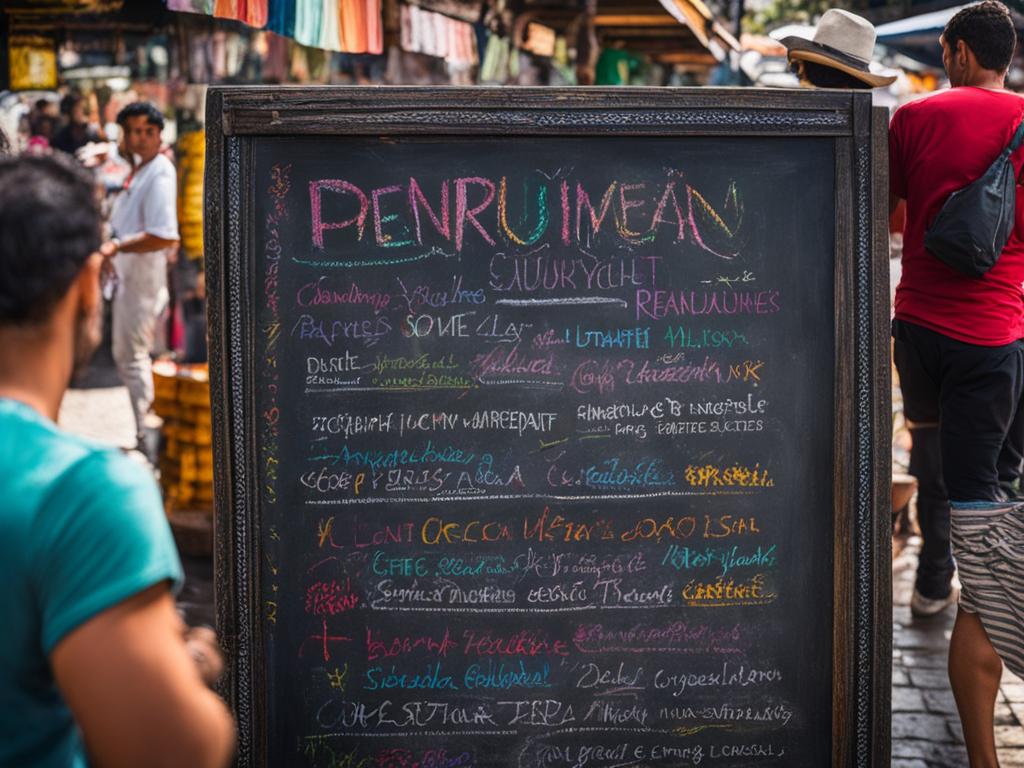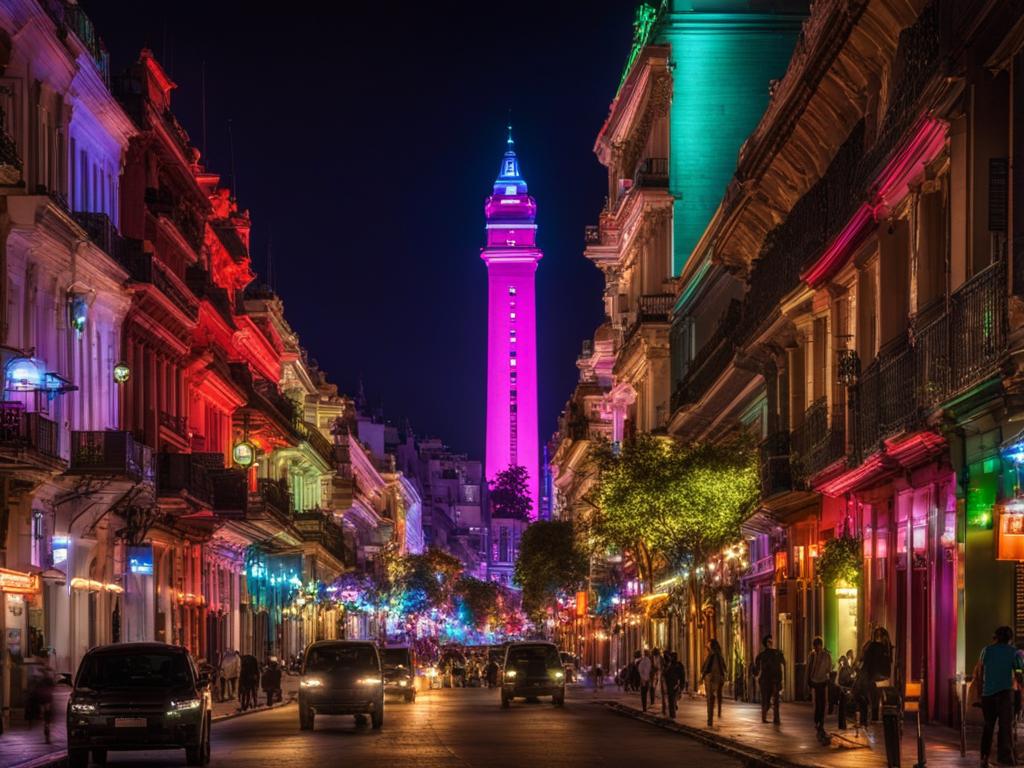Buenos Aires, often called the “Paris of the South,” is a cosmopolitan city with a Latin American twist. It’s a must-visit destination in South America, offering architectural beauty and a vibrant atmosphere. Before you visit Buenos Aires, there are a few things you need to know.
Key Takeaways:
- Practical Information of Buenos Aires
- Travel tips Buenos Aires
- Must-know Buenos Aires info
- Essential Buenos Aires guide
- Buenos Aires tourist information
Buenos Aires has Two Airports
Buenos Aires, the vibrant capital of Argentina, is served by two airports that cater to both domestic and international flights. The primary airport is Ezeiza (EZE), also known as Ministro Pistarini International Airport, which handles the majority of international flights. Situated around 35 kilometers southwest of the city, Ezeiza is well-connected to Buenos Aires by various transportation options, including taxis, buses, and airport shuttles.
The second airport, Aeroparque Jorge Newbery (AEP), is located closer to the city center, making it a convenient choice for domestic flights within Argentina. Situated along the Rio de la Plata, Aeroparque offers easy access to downtown Buenos Aires and its surrounding neighborhoods. Travelers flying domestically or arriving from neighboring countries often prefer this airport for its proximity and efficient transportation links.
Comparison of Buenos Aires Airports:
| Airport | Distinguishing Features | Distance from City Center | Main Airlines |
|---|---|---|---|
| Ezeiza (EZE) | Handles international flights | Approximately 35 kilometers | Major international carriers |
| Aeroparque Jorge Newbery (AEP) | Primarily for domestic flights | Approximately 8 kilometers | Domestic and regional airlines |
Whether you’re arriving in Buenos Aires for business or pleasure, knowing which airport you’ll be flying into or out of is crucial for efficient travel planning. Take into account the distance from your desired destination and consider the available transportation options to ensure a smooth journey to and from the airport.
Also read about: Your Ultimate Travel Guide: Discover Exciting Destinations
Buenos Aires: Stay for Three Days (Minimum)
When visiting Buenos Aires, it’s recommended to plan for a minimum stay of three days to truly experience all that the city has to offer. With its rich culture, historic landmarks, and vibrant neighborhoods, there are plenty of things to see and do during your visit.
Start your Buenos Aires itinerary by exploring the city’s iconic landmarks. Begin with a visit to the Plaza de Mayo, the main square that serves as the heart of the city. Here, you can admire the iconic Casa Rosada, which is the presidential palace, and the Metropolitan Cathedral.
Continue your sightseeing journey by exploring the different neighborhoods of Buenos Aires. Each neighborhood has its own unique charm and offers a glimpse into the city’s diverse culture. Don’t miss the colorful streets of La Boca, the upscale boutiques of Palermo, or the trendy bars and restaurants of San Telmo.
After exploring the city during the day, immerse yourself in the local culture by indulging in an evening of tango. Buenos Aires is known as the birthplace of this passionate dance, and you can find tango shows and milongas (tango dance halls) throughout the city. Experience the energy and romance of tango firsthand and let the music and dance transport you to the heart of Argentina.
Also read about: Tango: History, Milongas and the Dancing Scene in Buenos Aires
Whether you’re a history buff, a food lover, or a fan of vibrant nightlife, Buenos Aires has something to offer everyone. With a minimum stay of three days, you can experience the essence of this captivating city and create memories that will last a lifetime.
Table: Must-Visit Places in Buenos Aires
| Landmark | Description |
|---|---|
| Plaza de Mayo | The main square of Buenos Aires, surrounded by important government buildings and historic sites. |
| La Recoleta Cemetery | A cemetery known for its stunning architecture and the final resting place of many famous Argentinians. |
| Casa Rosada | The presidential palace of Argentina, famous for its iconic pink color. |
| Puerto Madero | A waterfront neighborhood known for its modern architecture, restaurants, and nightlife. |
| Teatro Colon | One of the world’s best opera houses, renowned for its grandeur and acoustics. |
- Take a stroll along the iconic Avenida 9 de Julio, one of the widest avenues in the world.
- Discover the vibrant street art in the neighborhood of Palermo.
- Indulge in delicious Argentine cuisine, including mouthwatering steaks and empanadas.
- Explore the historic San Telmo neighborhood and browse through its antique markets.
Getting Around Buenos Aires: A Guide to Public Transportation
When visiting Buenos Aires, navigating the city is made easy with its affordable and efficient transportation options. Whether you prefer using public transportation or hailing a taxi, there are various ways to get around and explore all that the city has to offer.
Public Transportation
Buenos Aires has an extensive bus network, a subway system known as the subte, and aboveground trains that connect the outer neighborhoods. The best way to use public transportation is by getting a SUBE card, which can be purchased at kiosks or subway ticket windows. The SUBE card allows you to travel seamlessly across different modes of transportation, and it offers discounted fares compared to paying with cash.
Also read about: How To Rock The Public Transportation in Buenos Aires
With over 180 bus lines and 6 subway lines, you can easily reach popular tourist attractions and neighborhoods using public transportation. The buses and subways operate from early morning until late at night, providing convenient options for getting around the city.
Taxis and Ridesharing
If you prefer a more direct and convenient mode of transportation, taxis are readily available throughout Buenos Aires. Taxis can be hailed on the street or booked through radio taxi companies. It’s important to note that taxis in Buenos Aires are metered, and it’s recommended to check that the meter is running at the start of the ride.
Another option for getting around Buenos Aires is using ride-hailing apps like Uber. However, it’s important to be aware that while Uber operates in the city, it is not considered a legal form of transportation. It’s always a good idea to check the local regulations and consider the risks associated with using Uber.


| Mode of Transportation | Pros | Cons |
|---|---|---|
| Bus | – Extensive network – Affordable fares | – Traffic congestion at peak times |
| Subway | – Fast and efficient – Easy to navigate | – Can be crowded during rush hour |
| Taxi | – Direct transport – Available 24/7 | – Metered fares – Possible language barrier with drivers |
| Uber | – Convenient booking – Cashless payment | – Legal considerations – Limited availability |
Overall, getting around Buenos Aires is affordable and convenient, whether you choose to use public transportation, taxis, or ride-hailing apps. With a little planning and the right transportation options, you can easily explore the vibrant neighborhoods, museums, and parks that make Buenos Aires a truly captivating destination.
Currency in Buenos Aires: Essential Tips for Exchanging Money
When visiting Buenos Aires, it’s crucial to have cash on hand due to the ever-changing economy. To ensure a smooth trip, it’s recommended to bring U.S. dollars or Euros, as they are widely accepted and can be exchanged in Argentina. Be sure to carry large bills in good condition, as they are preferred by most exchange services.
While credit cards are accepted in hotels and tourist-oriented establishments, smaller shops and restaurants often do not have the infrastructure to accept them. To avoid any inconveniences, it’s always a good idea to have cash available for your everyday expenses, such as meals, transportation, and shopping.
Spanish lessons in buenos aires tailored for you in Malaga, Buenos Aires, or live-streamed online
When it comes to exchanging money, Buenos Aires offers numerous options. Banks and authorized exchange houses, known as “cambios,” are the most reliable places to exchange your currency. These establishments typically offer competitive rates and provide safe transactions. Avoid exchanging money on the street or through unofficial channels, as it can be risky and may result in counterfeit currency.
Tips for Exchanging Money in Buenos Aires
- Research the current exchange rate before traveling to Buenos Aires to get an idea of the value of your currency.
- Exchange your money at reputable banks or authorized exchange houses to ensure a fair exchange rate and avoid counterfeit currency.
- Keep your exchange receipts for proof of transaction, especially if you need to reconvert any leftover currency upon departure.
- Consider exchanging a small amount of money at the airport upon arrival to cover initial expenses, but be aware that airport exchange rates are often less favorable.
- Avoid exchanging money on the street or through unauthorized individuals, as this can be risky and result in fraudulent transactions.
- If you prefer to use ATMs to withdraw cash, choose machines located in secure areas, such as inside banks or shopping centers, and be cautious of any suspicious activity.
Also read about: How to Make Your Money Go Further While in Argentina
By following these tips, you’ll be well-prepared to handle your currency needs while exploring the vibrant streets of Buenos Aires. Remember to always exercise caution and make informed decisions when it comes to exchanging and handling your money.
Don’t Think You Know How to Speak Spanish
In Buenos Aires, the official language is Spanish, but it’s important to note that the local version spoken here is known as Castellano. While it shares many similarities with standard Spanish, there are some distinct characteristics you should be aware of to effectively communicate during your stay.
One noticeable difference is the pronunciation of the “ll” sound, which is more like “zh” in Castellano. For example, instead of saying “pollo” like “poyo” (chicken), it would be pronounced as “poyo.” Another variation you may come across is the use of “vos” instead of the more commonly known “tú” (you).
Check out: Mastering the Art: How to Understand Portenos in Buenos Aires
Don’t worry if you’re not fluent in Spanish or Castellano. Many locals in Buenos Aires speak English, especially in tourist areas. However, learning a few basic phrases and greetings in Castellano can go a long way in making connections and showing respect for the local culture.


Common Phrases in Castellano:
- Hola – Hello
- Por favor – Please
- Gracias – Thank you
- Disculpe – Excuse me
- Hasta luego – See you later
Tips for Communicating:
- Speak slowly and clearly, even if you’re not confident in your pronunciation.
- Use gestures and body language to help convey your message.
- Carry a pocket-sized phrasebook or use a translation app on your phone for quick reference.
- Don’t be afraid to ask for clarification or repetition if you don’t understand something.
By being open-minded and making an effort to learn a few key phrases in Castellano, you’ll be able to navigate your way through Buenos Aires and connect with the locals on a deeper level. Remember, language is a gateway to culture, and embracing the local language will enhance your travel experience.
Buenos Aires Cuisine: A Meat Lover’s Paradise
Buenos Aires is renowned for its delectable cuisine, particularly its mouthwatering steaks. As a city with a strong meat-eating culture, vegetarians may find it challenging to find a wide variety of veggie options. While some restaurants do offer vegetarian dishes, the choices may be limited compared to the abundance of meat-based options. However, don’t despair just yet – there are still some delicious vegetarian options worth exploring in Buenos Aires.
One option for vegetarians is to try the salads offered at traditional steakhouse parrillas. These salads are often bursting with fresh ingredients and unique flavors, providing a refreshing and healthier alternative to the meat-heavy dishes. Additionally, many restaurants and cafes in Buenos Aires now cater to the growing vegetarian and vegan population, offering plant-based menu items that showcase the city’s culinary creativity.
Spanish courses in Malaga available in Malaga, Buenos Aires, or accessible online
For those who are not vegetarian, indulging in the famous steaks of Buenos Aires is a must. The city is filled with parrillas, or steakhouse restaurants, where you can savor the finest cuts of Argentine beef. These steaks are known for their tenderness and rich, full-bodied flavor, as well as the traditional cooking method of grilling over an open flame. Pair your steak with a glass of Malbec, an Argentine red wine, for a truly authentic dining experience.
| Steakhouse | Address | Phone |
|---|---|---|
| La Cabrera | El Salvador 5099, Buenos Aires | +54 11 4832-5754 |
| Don Julio | Guatemala 4699, Buenos Aires | +54 11 4832-6058 |
| El Desnivel | Defensa 855, Buenos Aires | +54 11 4300-9081 |
Also read about: Eating Delicious Asado (BBQ) in Argentina
Buenos Aires is Ice Cream Heaven
Buenos Aires is known for its exceptional ice cream. You’ll find numerous ice cream shops throughout the city, offering a wide range of flavors. Don’t miss the opportunity to try dulce de leche, a creamy caramel flavor that is a true Argentine delight. Rapa Nui, Freddo, and Volta are popular ice cream shops worth visiting during your stay.


When it comes to ice cream, Buenos Aires is a true paradise. With its Italian heritage, the city has embraced gelato culture and elevated it to new heights. The ice cream shops in Buenos Aires are known for their high-quality ingredients and unique flavors that cater to all taste preferences. Whether you’re a fan of classic flavors like chocolate, vanilla, and strawberry, or you’re looking for something more adventurous like mate or passion fruit, you’re sure to find something that satisfies your sweet tooth.
Check out: A Scientific Study Of The Best Ice Cream in Buenos Aires
Indulge in the Dulce de Leche Delight
No visit to Buenos Aires is complete without trying dulce de leche ice cream. This creamy caramel flavor is a staple in Argentine cuisine and is deeply beloved by locals and visitors alike. It offers a rich and indulgent taste that pairs perfectly with other flavors like chocolate or nuts. Some ice cream shops even offer a dulce de leche-filled cone or a dulce de leche sundae for the ultimate sweet treat experience.
| Ice Cream Shop | Location | Must-Try Flavor |
|---|---|---|
| Rapa Nui | Multiple locations throughout the city | Dulce de Leche with Brownie |
| Freddo | Multiple locations throughout the city | Dulce de Leche Granizado |
| Volta | Multiple locations throughout the city | Dulce de Leche Italiano |
These ice cream shops are just a few examples of the many options available in Buenos Aires. Exploring the city’s ice cream scene is not only a delicious experience but also a way to immerse yourself in the local culture and indulge in one of Argentina’s sweetest traditions.
So, when you’re in Buenos Aires, don’t forget to treat yourself to some delicious ice cream. Whether it’s a hot summer day or a chilly winter evening, a scoop of Argentine ice cream is always a delightful choice.
What Is That On My Bill?
When dining out in Buenos Aires, it’s important to understand the different charges that may appear on your bill. To avoid any confusion, let’s break down what these charges mean and how they relate to dining etiquette in the city.
Table Service Fee (Cubierto)
One of the charges you may come across is the “cubierto” or table service fee. This is a small charge added to your bill to cover the cost of the bread and cutlery provided at your table. It’s a common practice in Buenos Aires and is typically around 10-15% of the total bill. While some restaurants may include this fee in the menu prices, others add it separately. Keep in mind that the “cubierto” fee is not considered a tip and should be paid in addition to your gratuity.
Tipping
Tipping is customary in Argentina, and it’s expected to leave a gratuity for the service provided. The standard tip is around 10% of the total bill, but you can adjust it based on the quality of service you received. It’s polite to leave the tip in cash directly to the waiter or waitress. If you’re paying by card, you can ask the server to add the tip to the bill, but it’s always a good idea to have some cash on hand for this purpose.
Understanding the Bill
When you receive your bill in a restaurant, take a moment to review it carefully. Look for any additional charges or taxes that may be included. If you have any questions or concerns about the bill, don’t hesitate to ask the waiter or the restaurant staff for clarification. It’s always better to address any issues immediately rather than later.


Overall, Buenos Aires’ hidden cocktail bars offer a captivating and memorable experience for visitors. With their secretive entrances, innovative mixology, and enchanting atmospheres, these bars are a true reflection of the city’s vibrant nightlife culture. So, step off the beaten path and uncover the hidden treasures of Buenos Aires’ cocktail scene.
Buenos Aires is a City of Night Owls
In Buenos Aires, the city truly comes alive at night. Locals have dinner much later compared to other countries, with restaurants filling up between 9 and 11 p.m. Nightclubs and bars don’t get busy until around 2 a.m. If you want to experience the city’s vibrant nightlife, be prepared to adjust your schedule and embrace the night owl culture.
Discover: Best Bars in Buenos Aires: Discover Argentine Party
Late Nights and Dining Times in Buenos Aires
When visiting Buenos Aires, it’s important to adapt to the local lifestyle. Dinner is typically a late affair in the city, with locals enjoying their meals well into the night. This dining culture reflects the vibrant energy of Buenos Aires, with restaurants bustling with activity during the late evening hours.
So, if you plan to dine out and experience the city’s culinary delights, make sure to adjust your expectations and reservations accordingly. It’s not unusual to find restaurants filled with customers between 9 and 11 p.m.
- Restaurants in Buenos Aires start filling up between 9 and 11 p.m.
- Nightclubs and bars don’t get busy until around 2 a.m.
- Embrace the night owl culture to fully experience the vibrant nightlife.
Whether you’re enjoying a delicious Argentinean steak or sipping cocktails at a trendy bar, Buenos Aires offers a nightlife scene that caters to night owls. So, if you’re a nocturnal adventurer seeking excitement in the late hours, Buenos Aires is the perfect destination for you.
Table: Dining and Nightlife in Buenos Aires
| Information | Details |
|---|---|
| Dining Times in Buenos Aires | Restaurants are busy between 9 and 11 p.m. |
| Nightclub and Bar Hours | These establishments don’t get busy until around 2 a.m. |
| Nightlife Culture | Embrace the night owl culture to fully enjoy the vibrant nightlife. |
Conclusion
Buenos Aires is a captivating destination that combines architectural beauty, cultural richness, and a lively atmosphere. With the essential practical information and travel tips provided in this guide, you’ll be well-prepared to make the most of your time in the “Paris of the South.”
From exploring the vibrant neighborhoods and iconic landmarks to indulging in the mouthwatering local cuisine, Buenos Aires offers a wide range of experiences for every traveler. Remember to plan your stay for at least three days to fully appreciate the city’s beauty and immerse yourself in its vibrant culture.
When navigating the city, take advantage of the cheap and convenient public transportation options available, such as the extensive bus network and the subte subway system. Don’t forget to bring cash with you, as it’s essential for transactions in many establishments.
Lastly, embrace the night owl culture of Buenos Aires and experience the city’s vibrant nightlife. Whether you’re exploring hidden cocktail bars or indulging in late-night dining, Buenos Aires comes alive after dark and offers a unique and unforgettable experience.




